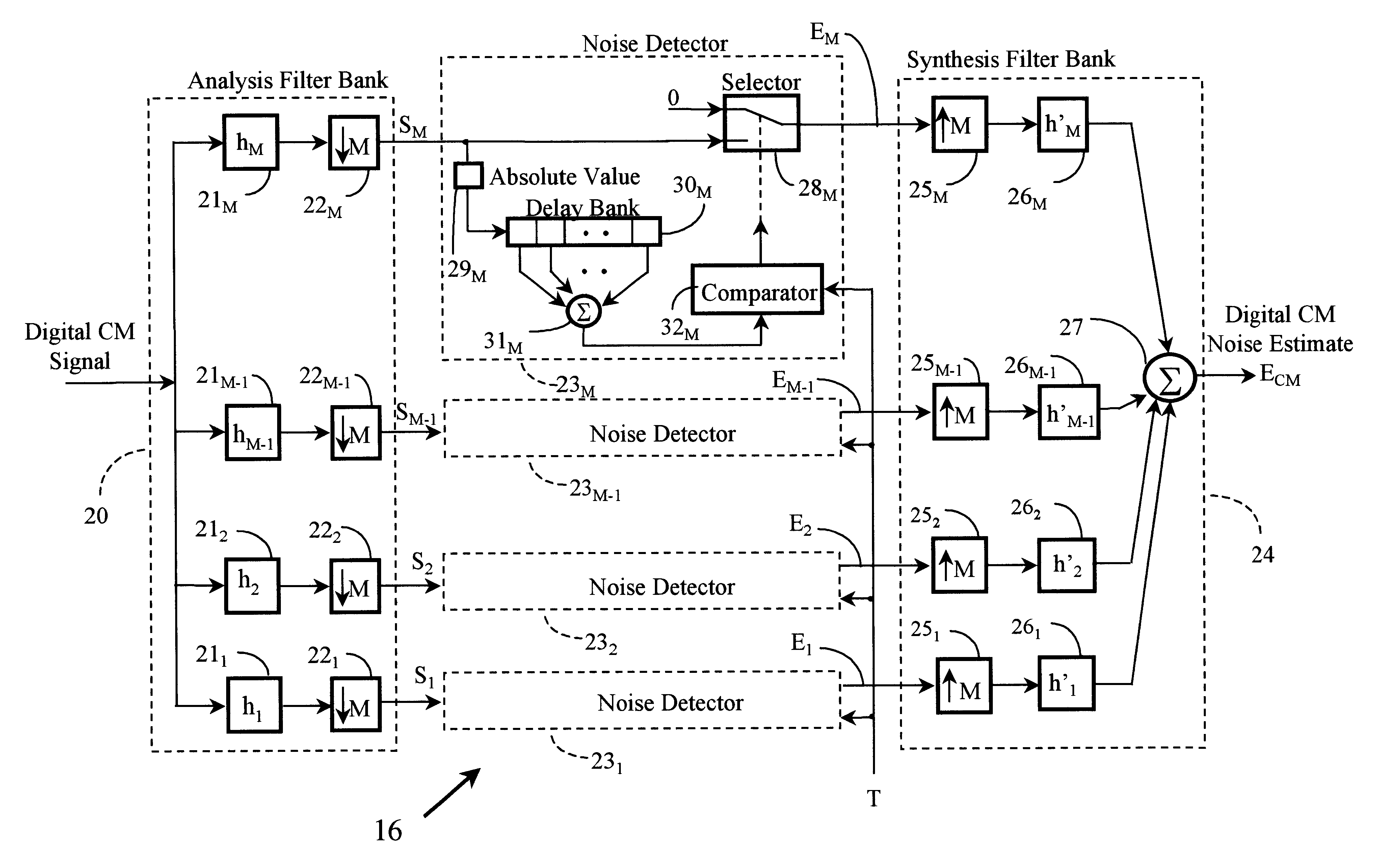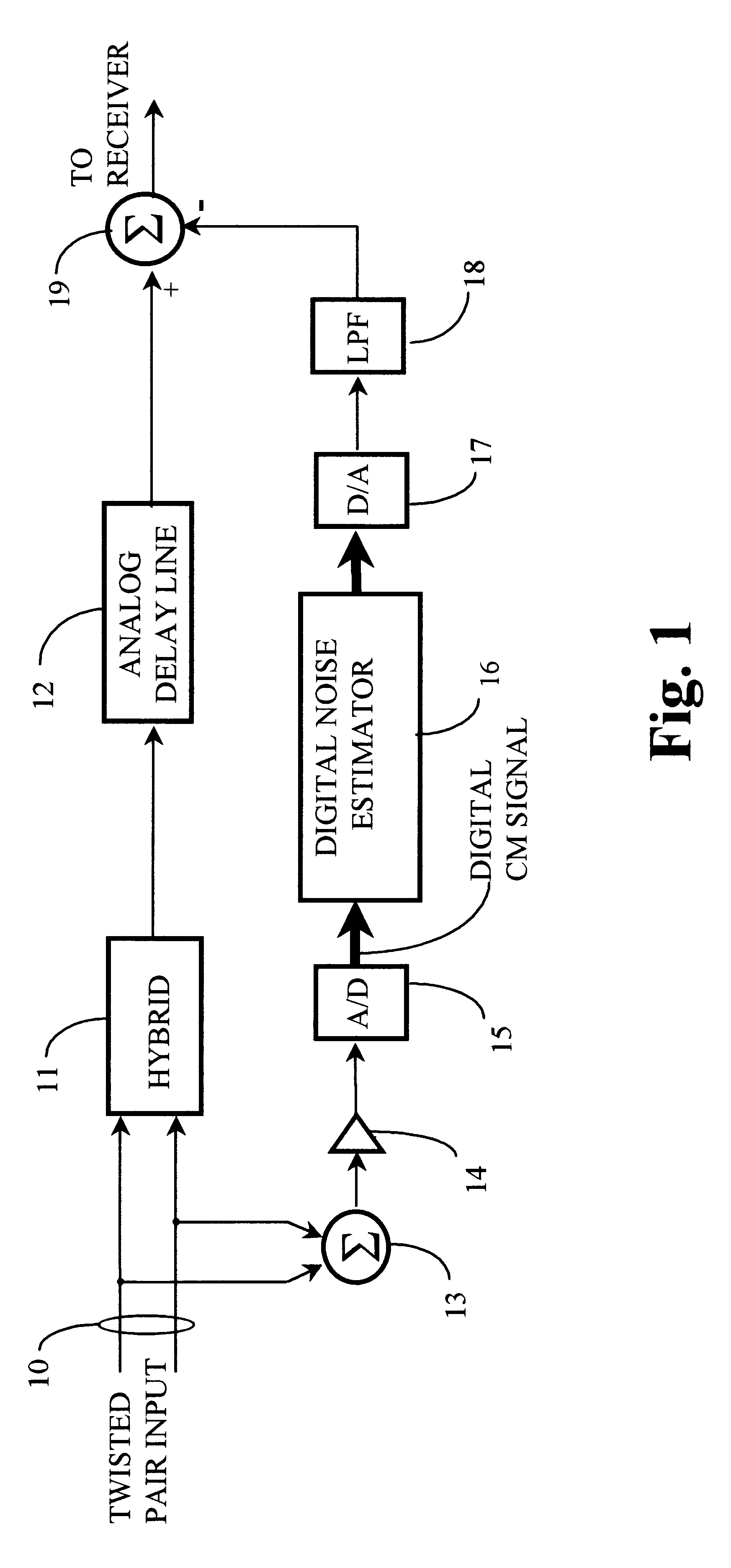Suppression of radio frequency interference and impulse noise in communications channels
a technology of radio frequency interference and impulse noise, applied in the direction of line-fault/interference reduction, line balance variation compensation, transmission, etc., can solve the problem that conventional techniques, such as cable balancing, are no longer sufficient to suppress radio frequency or impulse nois
- Summary
- Abstract
- Description
- Claims
- Application Information
AI Technical Summary
Problems solved by technology
Method used
Image
Examples
Embodiment Construction
)
Referring now to FIG. 1, in a noise suppression circuit according to an embodiment of the invention, the TIP and RING wires of a twisted pair subscriber loop 10 are coupled to the respective inputs of a hybrid device in the form of a circuit or transformer 11 and also to respective inputs of a summer 13 which extracts a common mode signal. The output of the hybrid device 11 is coupled by way of an analog delay line 12 to one input of a summer 19, the output of which is coupled to the usual receiver (not shown). The hybrid device 11 converts the signal received from subscriber loop 10 to a differential signal which includes a component corresponding to common mode noise in the received signal.
The common mode signal from summing device 13 is amplified by an amplifier 14 and applied to a noise estimation unit comprising an analog-to-digital converter 15 and a digital noise estimator 16. The amplified common mode noise signal is converted to a digital signal by analog-to-digital conver...
PUM
 Login to View More
Login to View More Abstract
Description
Claims
Application Information
 Login to View More
Login to View More - R&D
- Intellectual Property
- Life Sciences
- Materials
- Tech Scout
- Unparalleled Data Quality
- Higher Quality Content
- 60% Fewer Hallucinations
Browse by: Latest US Patents, China's latest patents, Technical Efficacy Thesaurus, Application Domain, Technology Topic, Popular Technical Reports.
© 2025 PatSnap. All rights reserved.Legal|Privacy policy|Modern Slavery Act Transparency Statement|Sitemap|About US| Contact US: help@patsnap.com



